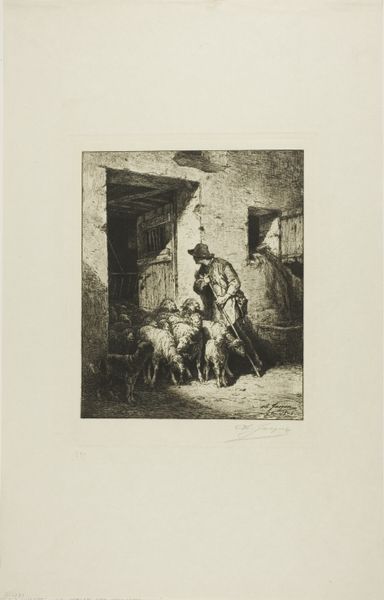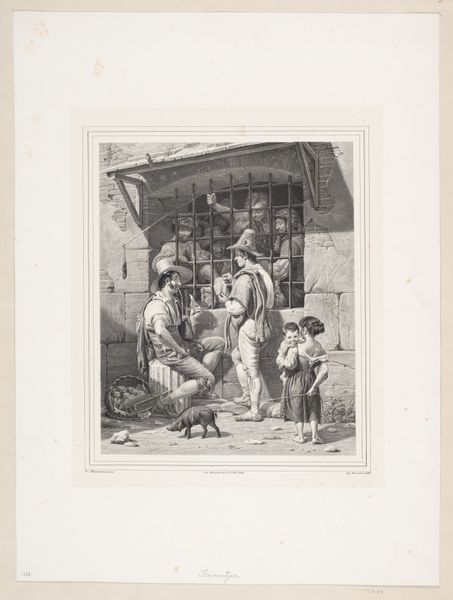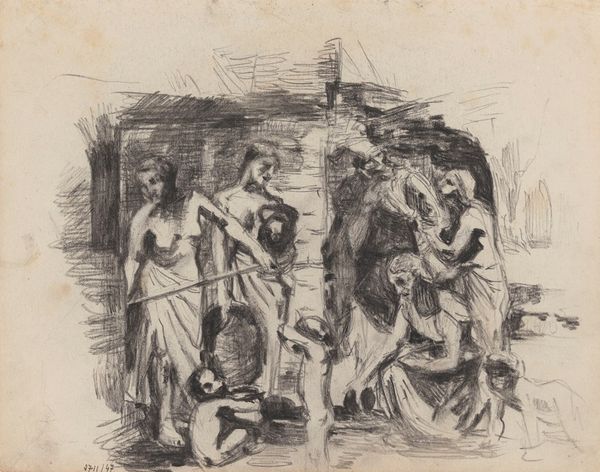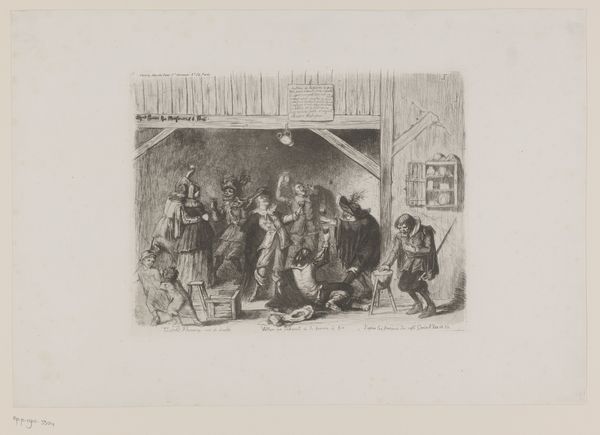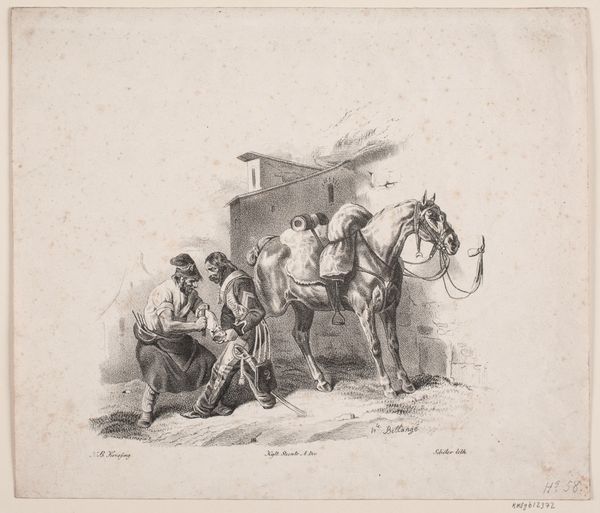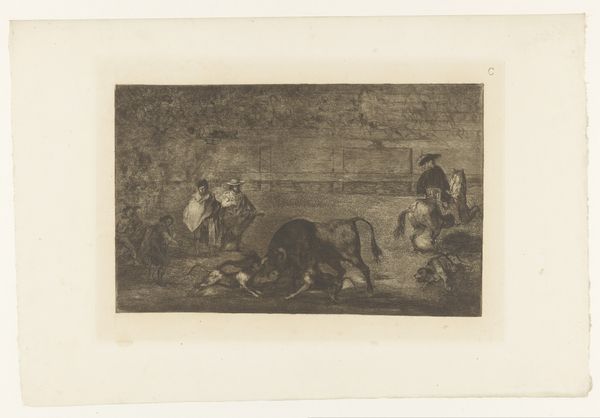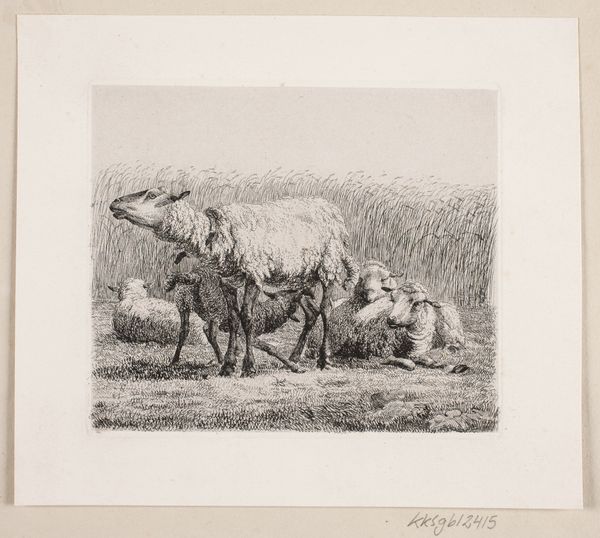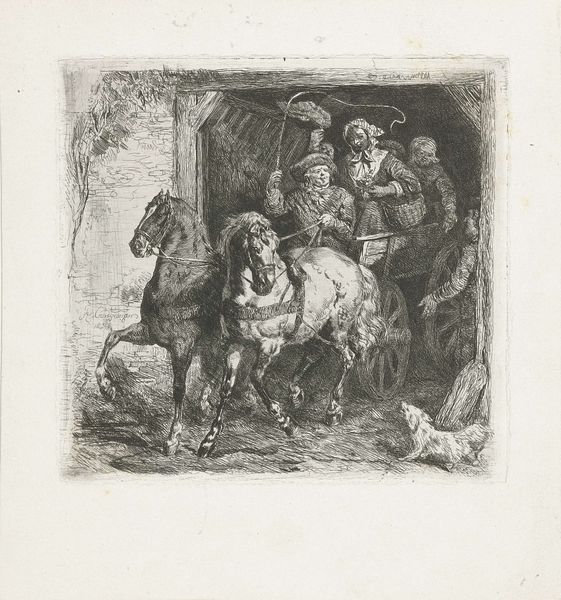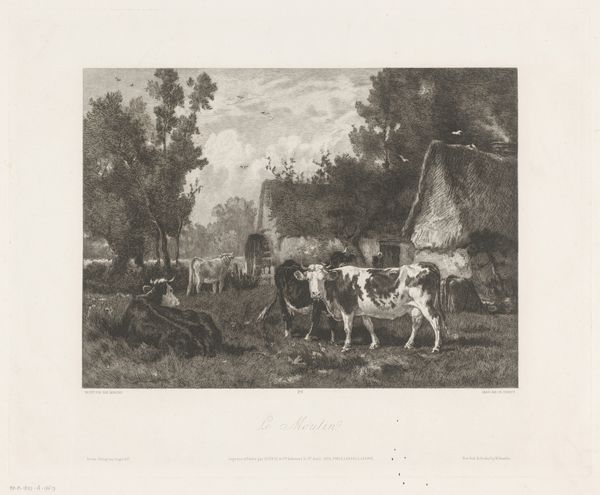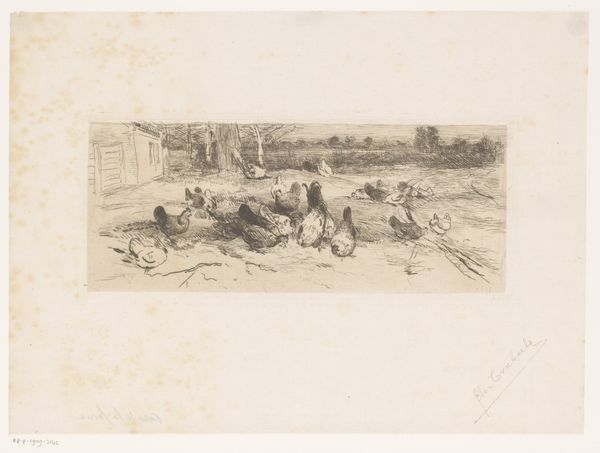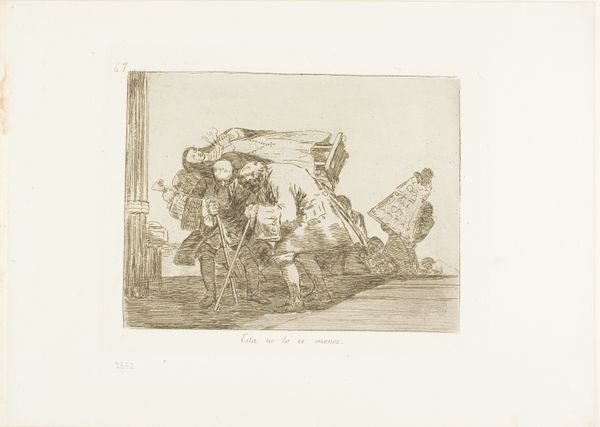
drawing, print, etching, ink
#
portrait
#
pencil drawn
#
drawing
#
narrative-art
# print
#
pen sketch
#
etching
#
pencil sketch
#
ink
#
genre-painting
#
realism
Dimensions: height 126 mm, width 128 mm
Copyright: Rijks Museum: Open Domain
Editor: So, this is *Interior with Four Drinking Men*, a drawing from somewhere between 1825 and 1863 by Guillaume Joseph Vertommen, housed here at the Rijksmuseum. It’s made with etching, ink, and pencil, giving it this loose, sketched feel. I’m struck by how… informal it feels. What’s your read? Curator: It's intriguing to consider this work through the lens of production and social context. Notice the emphasis on line and form, achieved through etching and ink, suggesting it may have been created as a preparatory sketch or print intended for wider distribution, potentially cheap. Editor: Interesting! So, it might have been made for mass consumption, almost like a proto-cartoon? Curator: Precisely. How do you think this impacts our interpretation of the work versus a painting on commission from a wealthy patron? It may well speak to ideas of labor, access, and class. Vertommen presents an every-man theme, don't you think? Drinking wasn’t only a gentleman's’ pursuit. It involves ordinary individuals as well. Editor: I never thought of it like that! The material aspects really shift how we see the figures themselves, turning them from unique portraits to representations of broader social behaviors accessible to others through material production. The artist, therefore, acted like a social mirror. Curator: Exactly. It challenges this traditional high-art narrative by acknowledging craft and reproduction and the lives of working-class or middle-class subjects, not just the elite. I feel we gain insight on cultural norms. Editor: It's fascinating to consider how the work's production informed its subject and audience. I had not realised there was so much cultural analysis that could spring from materiality. Curator: The choice of material is a lens through which to understand labor, access, and even subversion within art historical narratives.
Comments
No comments
Be the first to comment and join the conversation on the ultimate creative platform.


